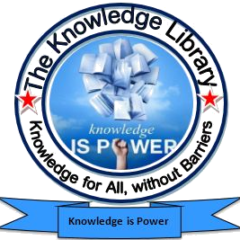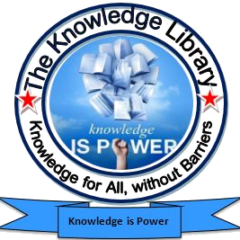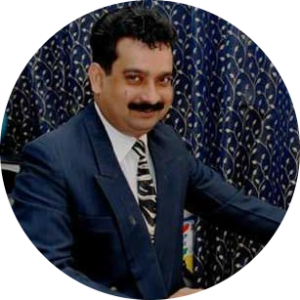TCP/IP is a:
a. Network Hardware
b. Network Software
c. Protocol
d. None of these
OSI stands for:
a. Open System Interface
b. Out System Interface
c. Open System Interconnection
d. Out System Interconnection.
TCP/IP mainly used for:
File Transfer
b. Email
c. Remote Login Service
d. All of these
IPX/SPX used for:
a. Linux
b. Unix
c. Novel NetWare
d. Windows
NetBIOS is developed by:
a. Microsoft
b. IBM
c. Sun
d. None of these
Which IEEE standard is developed for CSMA/CD
a. IEEE 802.1
b. IEEE 802.2
c. IEEE 802.3
d. IEEE 802.4
Which is the part of Data Link Layer:
a. LLC
b. MAC
c. Both a and b
d. None of these
Which network architecture is developed by IBM?
a. System Network Architecture
b. Digital Network Architecture
c. Boroughs Network Architecture
d. Distributed Network Architecture
_______are hardware and software combinations that connect devices running different native protocols.
a. Protocols
b. Models
c. Gateways
d. Ports
Which is the lowest layer of TCP/IP model:
a. Host to Host Layer
b. Network Access Layers
c. Internet Layer
d. Application Layer
_____is an access channel for computers to exchange information.
a. Socket
b. Port
c. Gateways
d. Protocol
How many ports a computer may have:
a. 256
b. 128
c. 65535
d. 1024
Which is the type of port:
a. Serial
b. Parallel
c. AGP
d. All of these
Parallel port can transfer ____ bits of data at a time:
a. 2
b. 4
c. 8
d. 16
Parallel Port can not connect:
a. Printers
b. Scanners
c. Telephones
d. Monitors
In computer which range is in registered ports:
a. 0 to 1023
b. 1024 to 49151
c. 49151 to 65535
d. None of these
USB stands for:
a. United Serial Bus
b. Universal Serial By-Pass
c. Universal System Bus
d. Universal Serial Bus
Which is the fastest port for data transfer:
a. USB
b. Serial
c. Parallel
d. FireWire
Default port for HTTP:
a. 23
b. 80
c. 21
d. 25
Which is not the part of the UDP datagram:
a. Source Port
b. Destination Port
c. Checksum
d. None of these
Which is the type of socket:
a. Datagram
b. Stream
c. Raw
d. All of these
In which layer of OSI model IP is available:
a. Layer 1
b. Layer 2
c. Layer 3
d. Layer 4
IP is defined in:
a. RFC 790
b. RFC 791
c. RFC 792
d. RFC 793
TTL stands for:
a. Time-To-Login
b. Time-To-Live
c. Transistor-Transistor-Live
d. None of these
Which protocol is used to report error message:
a. TCP
b. IP
c. ICMP
d. SMTP
Which is the error message reported by ICMP:
a. Time exceeded
b. Host unreachable
c. Echo request
d. All of these
What is the use of IP source routing:
a. Mapping the network drive
b. Troubleshooting
c. Performance
d. All of above
Which is the IP source routing method:
a. SSR
b. LSR
c. LLR
d. Both a and b
In a TCP header source and destination header contains:
a. 8 Bits
b. 16 Bits
c. 32 Bits
d. 128 Bits
Which is the false statement:
a. TCP enable dataflow for monitoring
b. It avoid network saturation
c. TCP makes communication between server and client.
d. In TCP/IP model Internet layer is closest to the user.
INTERNET Objective Questions
Which is not the application level protocol:
a. FTP
b. S/MIME
c. PGP
d. HTTP
RDP server runs on:
a. Computers
b. Switches
c. Routers
d. Servers
RDP client runs on:
a. Clients
b. Routers
c. Hosts
d. Switches
Which is the false statement:
a. Telnet is used for remote login.
b. FTP can transfer files between two hosts.
c. TFTP rely on TCP.
d. SMTP used to send mail message.
The default port for SMTP is:
a. 21
b. 23
c. 25
d. 80
SNMP used for:
a. Sending Message
b. Network management
c. Domain Management
d. Sending files
Which agency assign IPs:
a. IEEE
b. ANSI
c. ICANN
d. BSNL
Which is the component of IP:
a. Client Identifier
b. Network Identifier
c. Host Identifier
d. Both b and c
Which IP address is reserved for loop back or local host:
a. 192.168.0.0
b. 127.0.0.0
c. 127.0.0.1
d. None of these
Which class of IP is used in smaller organizations:
a. Class A
b. Class B
c. Class C
d. Class D
The size of the IPv4 is:
a. 16 Bits
b. 32 Bits
c. 64 Bits
d. 128 Bits
Which is the part of IP:
a. Netid
b. Subnetid
c. Hosted
d. All of these
The subnet mask 255.255.0.0 belongs to:
a. Class A
b. Class B
c. Class C
d. Class D
Who provide us internet:
a. TCP
b. ISP
c. FTP
d. HTTP
In which method we can connect to internet
a. Dial-up
b. SLIP
c. PPP
d. All of these
URL stands for:
a. Universal Resource Locator
b. Uniform Resource Locator
c. Uniform Radio Locator
d. None of these
Which is not the server side programming language:
a. JSP
b. ASP
c. JavaScript
d. PHP
The process of transferring files form a computer on the Internet to your computer is called ……
(a) downloding
(b) uploding
(c) FTP
(d) JPEG
In HTTPS ‘S’ is stands for:
a. Simple
b. Secured
c. Server
d. None of these
Which is not the requirement of internet:
a. Operating System
b. Dos
c. Web browser
d. Modem
The maximum speed of Modem is:
a. 32 Kbps
b. 56 Kbps
c. 64 Kbps
d. 128 Kbps
Which protocol is used for browsing website:
a. TCP
b. HTTP
c. FTP
d. TFTP
Which is not the browser:
a. Internet Explorer
b. Opera
c. Mozilla
d. Google
Which is not the search engine:
a. Altavista.com
b. Google.com
c. Facebook.com
d. Yahoo.com
Email stands for:
a. Easy mail
b. Electronic mail
c. Electric mail
d. None of these
Which is the chatting application:
a. Yahoo messenger
b. Google earth
c. You tube
d. None of these
Which service provide 3D view of earth:
a. Google Earth
b. Wikipedia
c. Skype
d. None of these
WWW uses …………… protocol.
a. FTP
b. HTTP
c. WBC
d. MTP
Website is a collection of ………
a. HTML documents
b. Graphic files
c. Lock key
d. All of these
For document exchange on network which of the following is not necessary?
a. Floppy
b. Telephone line
c. Connector
d. Satellite


 Users Today : 436
Users Today : 436 Total views : 467443
Total views : 467443